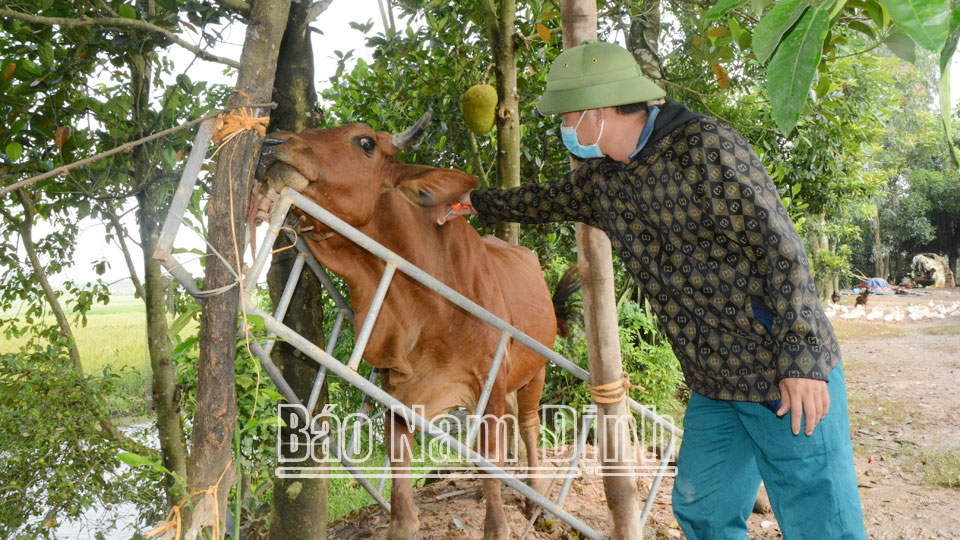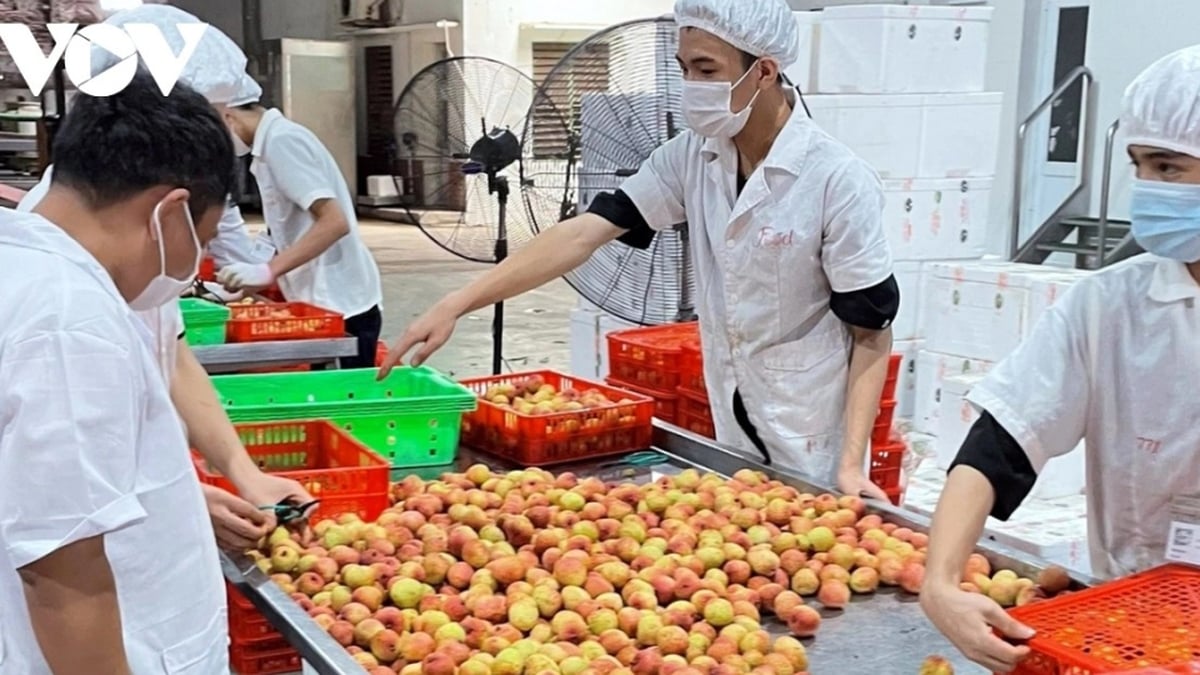Although the 2024 spring vaccination for livestock and poultry (GSGC) has been actively coordinated by the Department of Agriculture and localities, the actual vaccination results have not yet met the set plan targets.
 |
| Veterinary staff of Cong Hoa commune (Vu Ban) vaccinate animals against disease. |
In the spring crop of 2024, the whole province plans to vaccinate 152,900 pigs against cholera and anthrax; 27,770 buffaloes, cows and goats against foot-and-mouth disease; 19,300 sows and boars against foot-and-mouth disease; 47,700 dogs and cats against rabies; and 17,000 buffaloes and cows against lumpy skin disease. Localities will vaccinate their herds against diseases from April 15 to May 15, 2024. To promote spring crop vaccination, on April 19, 2024, the Department of Agriculture and Rural Development issued Official Dispatch No. 1292/SNN-CNTY on strengthening disease prevention and control measures and vaccinating livestock.
Comrade Tran Van Quyen, Chairman of the Farmers' Association, Chief Veterinarian of Lien Bao Commune (Vu Ban) said: Since the beginning of the year, the size of the commune's livestock herd has tended to increase compared to the same period in 2023. Implementing the spring vaccination plan under the direction of the Provincial People's Committee and the district's plan, the commune has developed a vaccination plan for livestock; promoted propaganda on the radio system to raise awareness and responsibility of cadres and livestock farmers about vaccination for livestock; at the same time, deploy the "Month of general cleaning, disinfection, and environmental detoxification" throughout the commune, contributing to ensuring safe and sustainable livestock development. Vaccination is scheduled with specific dates, times, and locations for each village and hamlet and publicly posted at the cultural house for people to know and coordinate implementation. Rabies vaccination for dogs and cats is carried out on Saturdays and Sundays. Thanks to that, the vaccination plan is implemented effectively, ensuring centralized vaccination and vaccination of subjects that need to be vaccinated. By May 10, 2024, the whole commune had completed 100% of the spring vaccination plan target.
However, overall, the vaccination results for the GSGC herd in the province have not yet met the set target. As of May 16, 2024, the whole province vaccinated 61,833 pigs against swine fever, reaching 40.4% of the plan (of which people bought vaccines themselves to vaccinate 46,835 pigs); vaccinated 2,028 buffaloes, cows and goats against foot and mouth disease, reaching 7.3% of the plan; vaccinated 4,313 sows and boars against foot and mouth disease, reaching 22.3% of the plan; vaccinated 66,344 dogs and cats against rabies, reaching 139.1% of the plan. In addition, people bought 15,200 doses of foot and mouth disease vaccine to vaccinate their pork herd; vaccinated 902 buffaloes and cows against lumpy skin disease, reaching 5.3% of the plan. Thus, in addition to rabies vaccination for dogs and cats exceeding the planned target, other targets have not yet reached the planned target.
The reason for the low rate of vaccination results this spring is that some breeders do not have the correct awareness and do not comply with the regulations on vaccination for the GSGC herd; the vaccination force of many communes and towns is too thin, some places have not yet completed the village chief after the merger, and some places have even assigned only the commune veterinary chief to perform the vaccination task. Party committees and authorities of some localities have not paid attention to leading and directing the implementation of spring vaccination for the GSGC herd; have not arranged funding to support the vaccination force; have not compiled and reported data on vaccine types from socialized sources to properly assess the vaccination results. The work of reviewing and counting the total GSGC herd still has many shortcomings and is not accurate, affecting the planning and organization of vaccination. In addition, many households and pig farms do not want outsiders, including veterinary staff, to enter the pig pens due to concerns about the outbreak and spread of African swine fever, making vaccination difficult. The problem of the lack of veterinary staff at the grassroots level has not been resolved for many years. Currently, the team of chief veterinary officers of some communes and towns is old, their health has declined, and they are in charge of a large area and they only have one person, so there are many potential risks. On the other hand, the salary paid to the vaccination team is low, so it is not possible to attract young veterinary staff to participate, making it difficult to complete the vaccination plan for the GSGC herd.
According to the assessment of the Department of Animal Husbandry and Veterinary Medicine (Department of Agriculture and Rural Development), in the coming time, the weather will continue to be unusual, with rain, heat, storms, and tropical depressions affecting the health of livestock. These are favorable conditions for dangerous animal diseases, such as African swine fever, to arise and spread. In the face of the above situation, the Department of Agriculture and Rural Development has issued an official dispatch urging vaccination and strengthening the prevention and control of heat and animal diseases. The Department of Agriculture and Rural Development requests the People's Committees of districts, cities, and related units to strengthen direction, organize and implement synchronously and effectively measures to develop livestock production and prevent and control animal diseases according to the provisions of the Law on Animal Husbandry, the Law on Veterinary Medicine, and directives of the Central and the province. Direct the People's Committees of communes and towns to review and evaluate the results of vaccination in the spring of 2024, overcome limitations and continue to thoroughly vaccinate livestock, especially against dangerous diseases such as: Avian influenza, foot and mouth disease, swine fever, blue ear, lumpy skin disease, rabies... to ensure the vaccination rate reaches at least 80% of the total herd. Direct local authorities, commune-level veterinary networks, and district-level professional agencies to closely monitor epidemics to households. Actively inform and propagate about the animal epidemic situation; provide specific instructions for farmers to properly declare livestock activities; regularly clean and disinfect the farming area; properly implement the vaccination process for GSGC; rationally use antibiotics in livestock farming./.
Article and photos: Van Dai
Source

































































































Comment (0)